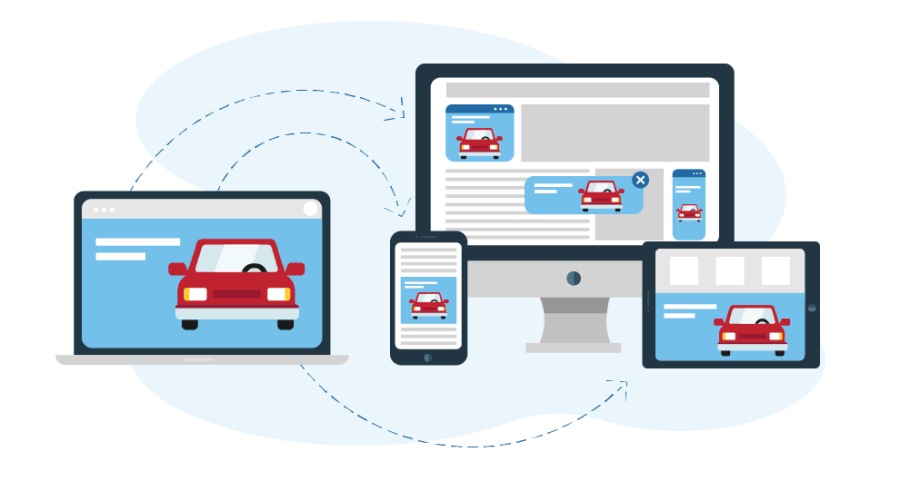A user leaving a website doesn't mean a sale is lost. In fact, it makes them the perfect target for a remarketing campaign — a crucial part of any digital marketing strategy — that can instead make them come surfing back for more.
What is remarketing?
Digital remarketing refers to a type of ad campaign that can be launched via social media platforms and/or Google Ads that specifically target users who have visited a website in the past (usually up to 30 days earlier). Once they visit a website, they are then tracked, targeted and served ads specifically for web or mobile sites they have previously visited.
Have you ever been shopping for an item online, abandoned your cart, and started searching for something else or reading online? Then, suddenly, you notice a sidebar or center ad for the exact same product (or if not that far, at least the same company) you had previously explored? If this has happened to you, you've been a part of a digital remarketing campaign without being aware.
Learn more about remarketing advertising strategies on Facebook to capture your social audience.
How does remarketing work within digital strategies?
Remarketing campaigns are a quintessential part of digital marketing strategies. By targeting digital marketing efforts to users who have already been on a brand or company's website (a.k.a. users that have already shown interest in a product or service), digital marketers can grow their brand awareness and pull users back in.
How do they do this? Remarketing allows companies to continue the conversation, which otherwise may have ended when the user abandoned their site. Sometimes, this abandonment is caused by a split-second decision or life (dog needs to go out, kids calling, etc.) whereas otherwise, the user would have completed their search or purchase. Other times, users "shop around," leaving items in their carts across multiple stores. Remarketing keeps brands at the front of shopper's minds while they are in the education phase of the buyer cycle.
Remarketing acts as a tap on a user's shoulder; "Hey, remember me?"
Remarketing vs Retargeting
It must be made clear that remarketing and retargeting campaigns are two different digital marketing strategies. Remarketing is focused on the use of emails and dynamic ads to pull users back in.
Retargeting ad campaigns, on the other hand, are more similar to paid ads. These use cookies to focus on specific devices to serve ads to.
Think: Retargeting is targeting users who have shown little interest in a brand. Remarketing is pulling users back in while they're in the buying process.
Which type of remarketing campaign works best?
There is no simple answer to this as each organization has different needs or actions they want a user to perform. So instead of asking, "What's best?," companies can ask, "Which strategy suits our business?"
Dynamic Remarketing Campaigns
Dynamic campaigns are based on the behavior of website visitors. These campaigns produce visual advertisements — complete with product images, prices, and your choice of text — to users who previously visited a website. Google creates these ads based on targeting chosen by an ads specialist.
Google Ads Remarketing Campaigns
Remarketing campaigns of this type produce visual ads for users on websites that use Google AdSense. Campaigns like this differ from dynamic campaigns because the advertisements are more general for companies, less for products.
Email Remarketing Campaigns
Remarketing email campaigns send targeted ads to individuals who have opened links in their emails. The ads that are produced in these campaigns may be dynamic, but they aren't always.
Facebook Ads Remarketing Campaigns
Facebook remarketing campaigns are used by digital marketers to create a warmer, engaged audience for their brand. By doing this, digital marketers are able to tailor messaging to who they are targeting and ensure the correct audiences are seeing the right message.
Why do remarketing ads work?
People love familiarity and personalization. Even if they have only visited a website one time, by serving them ads repeatedly (that friendly tap on the shoulder), users become comfortable with the brand. In remarketing campaigns, conversion rates increase with more ad impressions. Meaning, a user is much more likely to engage with a remarketing ad after seeing it multiple times, as opposed to being served a brand-new generic ad.
By building this familiar relationship where past users are often shown ads from a company, brand awareness is strengthened.
By targeting users that have already shown interest, digital marketing strategies can be more specific, use resources more effectively, and close sales that are easily accessible.
Get an Epic headstart with your remarketing campaign
Now that you understand the importance of remarketing in your digital marketing strategy, it is time to implement it and make sure that your sales aren't lost just because a user leaves the site.
Get a head start on your new remarketing campaign by partnering with Epic. Our digital marketing department already knows the ropes and has experience in all digital remarketing channels (dynamic, Google Ads, Facebook, email, and more), and are here to help.



